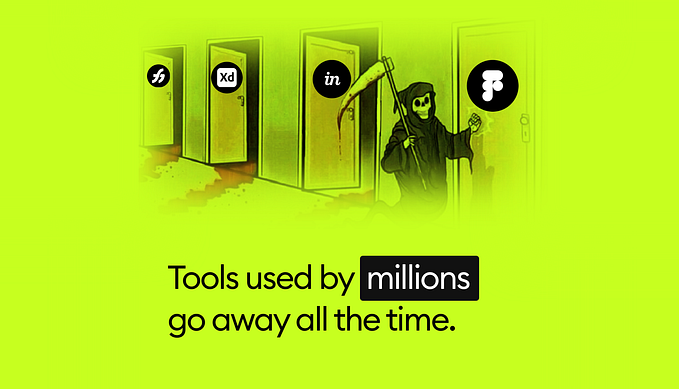My shower is a UX design nightmare

I think we have all been there at some point. You get in to the shower, anticipating to be relaxed by water running over your body and somewhere down the line, maybe most unfortunately when your hair is all soapy and your eyes closed, the water starts acting out. Suddenly it’s ice cold or scalding hot and your experience is disrupted. Now you need to find out what has gone wrong and how to fix it — fast.
I’ve been in that position several times this past two weeks which made me realise to this point I’ve actually not really understood how my shower works. And why would I need to? There is so many things in our world where we don’t really know the mechanics behind them but implicitly understand how to get what we need from them based on the feedback we receive upon executing certain actions. The power of good design reveals itself best when there is an error: can an everyday user figure out where the issue lies? Can they implicitly understand what they may need to do next?
I’ve recently been reading the seminal Don Norman book, The Design of Everyday Things. In it he highlights the importance of ‘discoverability’ and ‘understanding’:
“ Two of the most important characteristics of good design are discoverability and understanding. Discoverability: Is it possible to even figure out what actions are possible and where and how to perform them? Understanding: What does it all mean? How is the product supposed to be used? What do all the different controls and settings mean? ”
When people hear the term ‘user experience designer’, they mostly imagine a hot new tech job that has been invented for this day and age. But actually being a user experience designer does not have to limit itself to the digital world. Anything in the designed world requires an understanding of its human users; therefore, most of the principles applied in the digital sphere can be used in the physical as well. Furthermore, when we talk about interaction design you do not have to imagine some fancy animation that comes alive when you click something. As Norman puts it eloquently, interaction design has the goal of enhancing “people’s understanding of what can be done, what is happening, and what has just occurred”. So based on his guidelines and terminology let’s see what happened in my interaction with the nightmarish shower and whether we can make any sense of it at all.
I have been in this house for nearly nine months and so far my interaction with the shower has been alright although not very smooth. The shower mixer along with other handles and taps around the bathroom have a quaint look, so I’m not surprised when I find out the closest model to my shower online is called the ‘Bensham Edwardian exposed thermostatic shower valve’.

According to Norman, and now accepted in the wider UX community, we build ‘conceptual model’s of the things around us in our heads, also called ‘mental model’s. A conceptual or mental model is a simplified explanation of a service or product in ‘people’s minds that represent their understanding of how [these] things work’. They can come from manuals, be passed on from person to person or can be built through experience. Unfortunately, as they are perception of how things work rather than how they actually were designed to work, they can be erroneous, leading to difficulties in interacting with a product or service. In building conceptual models we mostly rely on our experience interacting with the product in question. On a subconscious level our minds note certain actions that are allowed and overt signals we receive when interacting with the product. Former is called ‘affordance’s, while the latter is called ‘signifier’s. Norman explains these terms further:
Affordances are the possible interactions between people and the environment. Some affordances are perceivable, others are not.
Signifiers signal things, in particular what actions are possible and how they should be done. A signifier can be words, [and/ or] a graphical illustration.
Now let’s compare my conceptual model of the shower to the conceptual model the designer intended to communicate to see where things might have gone wrong.
First my own model: the shower has four controls. The highest handle allows me to switch between two shower heads; if the handle is facing downward it means I can use the removable shower head, and if it’s facing upward the water will be coming from the fixed rainfall shower head above. My model for this part of the shower matches the actual conceptual model.


The second control is the lower handle and if I turn it anti-clockwise water will start pouring out of the shower head.

This also mirrors the intended conceptual model. However, as you can see from the picture below, there are words ‘On’ and ‘Off’ printed on this handle accompanied by a double-headed arrow, and based on where this writing is facing I’m confused as to why it’s there. Am I also meant to turn this handle on its axis? Is this signifier trying to alert me to an affordance I have overlooked?

When I look online, I realise that this handle that controls the water flow is somewhat accidentally turned on its axis in my shower; maybe it became loose somehow and needs to be turned back into position so the words and arrows will all be facing the user. I understand that this might have been accidentally turned around at some point, but isn’t the fault with the designer? If the handle is designed to allow the action of turning on its axis, surely the designer could have imagined that these signifiers could become unreadable or confusing at some point should the handle remain stuck in an unintended position. However, it is also worth keeping in mind that the designer is not alone in producing this shower. Maybe they realised that this design had the potential of becoming confusing for the user, yet other restraints such as time, money or collaborating stakeholders such as engineers or sales people made it hard to improve on their design.
The third control is the temperature. This is where things get very tricky. How do you think I’m meant to set the temperature based on picture below? A simple turn of the temperature valve right? But which way? The signifiers on the valve are confusing because the arrows seem to be both pointing to ‘Cold’. So am I meant to turn it anti-clockwise to get it from ‘Hot’ to ‘Cold’ or does it mean I have to turn it anti-clockwise so it gets ‘Hot’?


I normally would not have spent so much time trying to figure this out consciously, at the end of the day, however confusing the designed products around us can be, we generally end up finding the answers we need by simple trial and error. Until two weeks ago, this is also what I’ve been doing, turning it anti-clockwise to get it hot and turning it slightly clockwise afterwards if the water seemed too warm. I’ve been doing this without a real understanding of the shower, so much so that I would just start rambling whenever I needed to inform guests on how to use it and hoped they would find what they needed through trial and error too. If I’m honest, even with trial and error, I mostly got lukewarm water instead of warm, relaxing water and it was really a gamble each day that I had to come to terms with.
Meanwhile my conceptual model also included a fourth control: the round layer with engraved temperatures and a small metal nub.

I figured this might have to do with setting the temperature as well, but however hard I tried I could not move this nub from its position. I thought this might be the reason I was not getting a consistent temperature: maybe I needed the two controls of temperature, as far as I knew — the valve and the nub, to work in conjunction with one another, and combined they would be able to set a consistent temperature.
Then it happened. I was about to meet someone for a meeting in Central London and I figured I would just quickly hop into the shower and get freshened up before my meeting. It took me 40 minutes to do the bare minimum and I was nearly late for my meeting. That night after I came back from my meeting, I decided I had enough: I was going to figure this shower once and for all.
First I fished around for some sort of manual or instructions booklet for the shower in a drawer full of important documents. No luck there. Then I went into the bathroom and closely inspected the taps and shower handles to see if I can find out about the model or the brand. The word ‘Bensham’ kept coming up so I figured I’d google it. This is how I ended up in their online store for their bathroom range. After browsing a little… Bingo! I found it. It was the ‘Bensham Edwardian exposed thermostatic shower valve’. Unfortunately there was no information on how you could set a temperature, just the instalment manual.

I decided to google ‘how to use my thermostatic shower valve’. And so I came across this:
Finally! Here was someone answering all the questions I’ve ever had about my nightmare of a shower. Turns out my conceptual model was wrong about how to set the temperature. According to the intended conceptual model, this is how you actually set the temperature:
- Turn the water flow control handle anti-clockwise to get the water running.
- Turn the temperature valve anti-clockwise all the way till it gets stuck.
- Wait approximately 3 minutes for water to reach highest possible temperature.
- Highest possible temperature is set by whomever last modified or installed the shower. The circular layer with engraved temperatures and the little metal nub indicates what the highest temperature could be (Apparently I can change this if I bothered to screw the valve out and rearranged where this layer is set. No thank you.)
- Once the water reaches its highest possible temperature, you can turn it clockwise to make it less warm.
So, turns out in the intended conceptual model there are only three controls (not four) and what I considered to be the fourth control is actually fixed. It can be changed but only if you’re willing to get your hands a little dirty.
Armed with a clearer understanding of how my shower actually works, I hopped in the next day full of optimism. Unfortunately the nightmare was far from over: take your pick, either scalding hot or freezing cold. Feeling frustrated I decided it was time to call the experts in. A week later the culprit was found: we needed a brand new boiler! Then a miracle happened and we were given a new boiler — you might wonder what the miracle there is but if you’re renting in London getting anything new let alone something so pricey as a new boiler is actually quite the miracle. Yesterday, for the first time in two weeks I had a grand experience in the shower, taking as long as I needed and feeling very relaxed afterwards. My experience was never disrupted and I felt grateful. So my nightmare had a magical ending after all.
Do you like what you have been reading here? If so, give me some love by clapping :)
What are some annoying interactions you have been having recently with things around you that should have been simple? Share your frustrations below!










